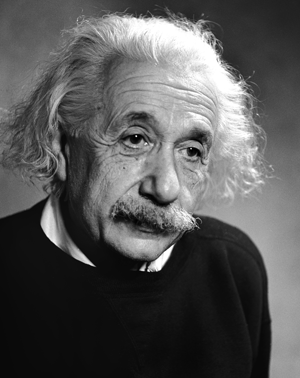by Kim Brady
Among the images that will live forever in the collective consciousness of the Western world are the insightful portraits by Fred Stein. Dedicated as much to humanity as he was to the camera, Stein's mission as a photographer was to capture the souls of those he photographed. His subjects were the educated elite: scientists, artists, writers, architects, and politicians. They were also the man on the street: children, lovers, workers, hobos, and peddlers. He got to know his eminent subjects backward and forward. He read their bodies of work, and knew where they stood in the world, as well as the positions they held in their respective disciplines. When he wasn't photographing his more famous subjects, he was walking the city streets, recording life as it unfolded before him.
Stein was born in 1909, in Dresden, Germany. His father was a prominent rabbi and his mother a teacher. He was a brilliant student. He skipped two years at the Gymnasium, a high school for college-bound students, and earned a law degree in three years, after traveling from university to university seeking out the best professors in his field. He graduated first in his class in 1933, just as Adolph Hitler was beginning to spread his message of Aryan supremacy. Stein had joined the socialist youth movement in Germany when he was 16 and set the goal of becoming a public defender. But three weeks before he was scheduled for admission to the bar, he was labeled as racially and politically unfit, and dismissed by the Nazi government. Secretly informed that he was soon to be arrested, Stein left the country in 1933 under the pretense of taking a honeymoon with his new wife, Lilo Salzburg, and fled to France.
Paris in the '30s was a vivid time for these expatriates. The Steins were at the center of a group of young socialists, thinkers, and artists. They sheltered refugees in their home and cooked huge meals to help feed their friends. There Stein began to work professionally as a photographer, a vocation to which he was committed until he died in 1967. " He was a true intellectual," remembered his son, Peter Stein, who works as a cinematographer in New York. "He had an enormous knowledge of art, politics, architecture, music, literature, and linguistics. He was a prodigious reader. He would read three or four magazines a week, The New York Times every day and two or three books a week. He knew the world scene and politics and always had an opinion on both. He would often take me with him when he visited art galleries or photographed the streets of New York."
The Stein family lived in Washington Heights in uptown Manhattan. Lilo taught German literature at Adelphi University, while her husband sold his photographs. Stein never worked for any one publication, wanting to maintain his creative freedom. Instead, he sought subjects whom he thought were interesting and found a way to get to them, either through their publishers or his friends. Once he photographed them, he sold their images to book publishers, magazines, and newspapers. Much of his work appeared in Time, and The New York Times, but he also contributed to Newsweek, Life, and many European magazines.
The key to Stein's intimate portraiture was the rapport he established with his subjects during their photo sessions. He would involve them in conversation as a diversion, waiting until they were fully at ease before he pulled out the camera. However, the discussion often would dominate the photo session. For example, in the case of Albert Einstein, Stein had made arrangements with Einstein's assistant, a friend from his college days. He was told he had only 10 minutes with the scientist. Stein photographed him as they talked, and they soon became immersed in conversation. Einstein's secretary periodically came in to tell Stein he had to leave, but Einstein would say, "No, no, he has to stay!" Stein ended up talking with the scientist for two and a half hours.
In an article published in 1954 in The New York Times, Stein was quoted as saying: "The report of a likeness and the revelation of character are the two principal goals of the portrait photographer. Both purposes must be achieved in the successful portrait, since full recognition of a person is not in the exterior identity alone, but is elaborated and made convincing by some visible element of individuality.”
"The photographer is, therefore, alert to attitude, gesture, and expression, and snaps the shutter at the critical moment when these signs all blend together to describe the inner personality." "One moment is all you have. Like a hunter in search of a target, you look for the one sign that is more characteristic than all the others. The job is to sum up what a man is according to your understanding of him. The painter has the advantage here since he can work toward his objective through several leisurely sessions; the photographer has only one, and that one as brief as a split second."
Stein shot only black-and-white film for his professional work. He was one of the first to use a hand-held camera and carried the first model Leica ever made. He most often used available light or on-camera flash, and developed and printed all of his own film. His work is scheduled for display at several galleries this year.
